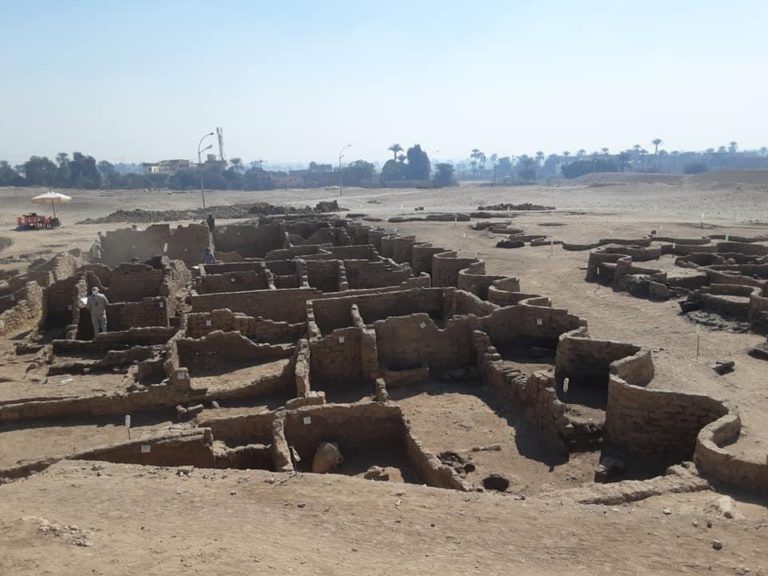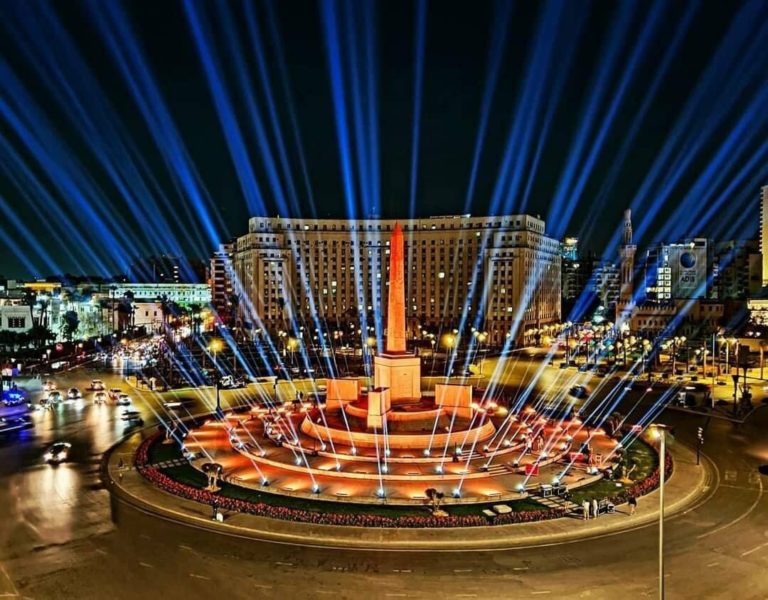According to The Guardian a team of archeologists began with excavations between the temples of Ramses III and Amenhotep III near Luxor exactly 500km south of Egypt’s capital, Cairo in September 2020.
After many years of foreign missions attempting to make this find, the Egyptian mission lead by Dr Zahi Hawass found the 3 000-year-old city – known as Aten – buried in the sand.

City of Aten newly uncovered by an Egyptian mission team lead by Dr Zahi Hawass.
Uncovered in the long-lost city were items of jewellery, pottery vessels, scarab beetle amulets and mud bricks bearing the seals of Amenhotep III.
Since the beginning of this excavation, several neighbourhoods have been discovered, along with a bakery complete with ovens and storage pottery.
Amenhotep III ruled for nearly four decades and his rule is well known for its opulence and grandeur. ‘The archaeological layers have laid untouched for thousands of years, left by the ancient residents as if it were yesterday,’ the team’s statement said.
Betsy Bryan, Professor of Egyptian art and archeology at Johns Hopkins University said the city ‘will give us a rare glimpse into the life of the Ancient Egyptians at the time where the empire was at his wealthiest’.
The country has for many years dealt with many political instability issues and is now seeking to bring back visitors by promoting its ancient heritage.
In a move to attract international visitors and boost tourism BBC News reported that the Egyptian government moved 22 mummies from the Egyptian Museum to their new resting place 5km away. The new exhibits will be housed Royal Hall of Mummies for the general public to go view from 18 April 2021. When visiting the hall visitors will experience the illusion of being in the Valley of the Kings in Luxor.
In a lavish parade, 18 kings and 4 queens were moved through Cairo. Take a look:
From the 17th Dynasty ruler, Seqenenre Taa II, to Ramses IX, who reigned in the 12th Century BC, the mummies were transported to the new National Museum of Egyptian Civilisation in chronological order of their reigns in what is called The Pharaohs Golden Parade.

Each mummy was carried on a decorated vehicle fitted with special shock-absorbers and surrounded by a motorcade, including replica horse-drawn war chariots.

The vehicle used to transport each of the mummies.
A lot of thought and planning was put into this occasion – the roads along the route have been repaved and the pharaohs have bee placed in nitrogen-filled boxes to help protect them from external conditions.
‘The Ministry of Tourism and Antiquities has done its best to make sure that the mummies have been stabilised, conserved, and are packed in a climate-controlled environment,’ said Salima Ikram, professor of Egyptology at the American University in Cairo.
‘They have already seen a lot of movement in Cairo and before that in Thebes, where they were moved from their own tombs to other sepulchres for safety,’ Dr Ikram pointed out.
While most of the ancient rulers’ remains were brought from Luxor to Cairo via boat on the Nile, a few were transported in the first-class carriage of a train. They were housed in the iconic Egyptian Museum and visited by tourists from around the world for the past century.
Egypt’s authorities are crossing fingers in hopes that the new museum will help revitalise tourism, as tourism is the prime source of foreign currency in the country.
With South Africans being ranked the most restricted travellers in the world, it’s good to say that doesn’t apply to Egypt. For South Africans looking at taking a much-needed break to travel, Egypt allows visa-free travel for you.
PICTURES: Twitter

















